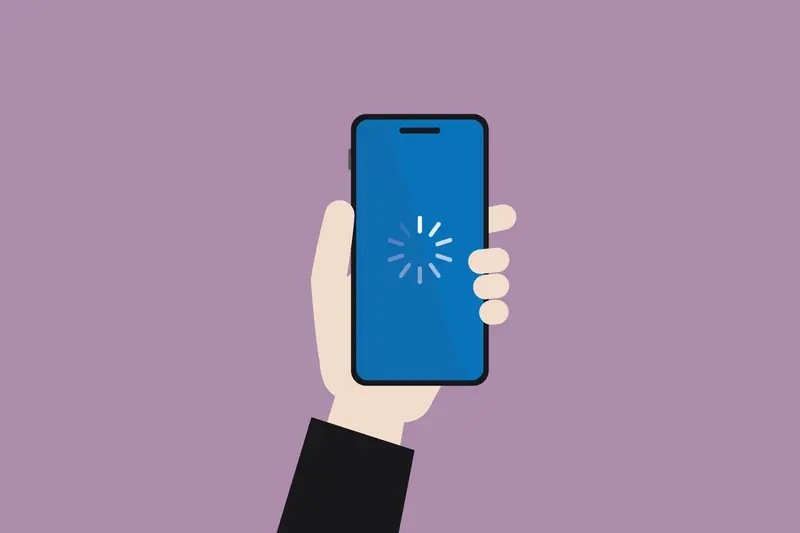Which App Analytics Tools Should You Choose?
Every day, millions of people download mobile apps, but here's the shocking truth: most developers have no idea what happens after that download button gets pressed. They're flying blind, making decisions based on guesswork rather than data. This is where app analytics becomes your secret weapon—the difference between building something people actually use and creating digital tumbleweeds.
The measurement platforms available today are more powerful than ever before. They can tell you which features people love, where they get stuck, and why they might delete your app. But here's the catch: there are dozens of analytics tools out there, each claiming to be the best. Some are free, others cost thousands per month. Some focus on user behaviour, others on technical performance.
The best analytics tool is the one that answers your specific questions, not the one with the most features
At Glance, we've implemented analytics for apps across every industry—from healthcare to gaming to e-commerce. What we've learned is that choosing the right analytics setup isn't just about picking a tool; it's about understanding what questions you need answered and matching those needs with the right measurement platforms. This guide will help you navigate those choices, showing you exactly which tools work best for different types of mobile app projects and budgets.
Understanding App Analytics in Mobile Development
After building mobile apps for well over a decade, I can tell you that analytics aren't just nice-to-have features—they're the backbone of any successful app strategy. Think of analytics as your app's report card; they tell you what's working, what isn't, and where you should focus your efforts next.
App analytics collect data about how users interact with your mobile application. This includes everything from which screens they visit most to where they get stuck and abandon their journey. Without this information, you're basically flying blind—making decisions based on guesswork rather than real user behaviour.
What App Analytics Actually Track
The data you can collect falls into several key categories:
- User acquisition metrics (where users come from)
- Engagement data (how often people use your app)
- Retention rates (do users come back?)
- Conversion tracking (are users completing desired actions?)
- Performance metrics (crashes, load times, errors)
- Revenue analytics (for apps with monetisation)
The beauty of modern analytics tools is that they can track user journeys across multiple sessions, giving you a complete picture of how people use your app over time. This data becomes invaluable when you're making decisions about new features, user interface changes, or marketing campaigns.
Popular Free Analytics Platforms for Mobile Apps
When you're starting out with mobile app analytics, free platforms can give you everything you need without breaking the bank. I've worked with dozens of these tools over the years and there are some clear winners that consistently deliver reliable data and useful insights.
Google Analytics for Firebase stands out as the most comprehensive free option available. It tracks user behaviour, app crashes, and conversion events whilst providing detailed audience demographics. The setup process is straightforward—you'll have basic tracking running within an hour of installation. Facebook Analytics (now part of Meta Business Suite) offers excellent social media integration and user funnel analysis, making it perfect for apps with social features.
Top Free Analytics Platforms
- Google Analytics for Firebase - Complete user tracking and crash reporting
- Meta Business Suite Analytics - Social integration and demographic insights
- Flurry Analytics - Real-time user sessions and retention metrics
- App Annie Intelligence - Market research and competitor analysis
- Countly Community Edition - Privacy-focused analytics with customisable dashboards
Flurry Analytics deserves a mention for its real-time capabilities and clean interface. It's particularly good at tracking user sessions and providing retention data that actually makes sense. The reporting is visual and easy to understand, which helps when you're presenting findings to stakeholders.
Start with Google Analytics for Firebase as your primary measurement platform—it integrates seamlessly with other Google services and provides the most comprehensive free feature set available in 2024 technology.
Premium Analytics Solutions Worth the Investment
When free analytics tools aren't giving you the depth of insight you need, premium solutions can be a game-changer for your app's success. I've worked with clients who've made the leap from basic analytics to paid platforms—and the difference in what they discovered about their users was quite remarkable.
Premium analytics platforms like Mixpanel, Amplitude, and Flurry Premium offer features that free tools simply can't match. You get advanced user segmentation, funnel analysis, and cohort tracking that shows exactly how different groups of users behave over time. These tools let you track custom events with much more precision; you can see not just that someone tapped a button, but what they did before and after that action.
Advanced Features That Matter
The real value comes from predictive analytics and user lifetime value calculations. Premium platforms can predict which users are likely to churn before they actually leave your app. They offer A/B testing capabilities built right into the analytics dashboard, so you can test different features and see results immediately.
When to Make the Investment
If your app generates revenue or you're planning to monetise soon, premium analytics pays for itself quickly. The insights you gain help you make smarter decisions about feature development, user retention strategies, and marketing spend. Most premium platforms offer free trials—I always recommend testing them thoroughly before committing.
Choosing Analytics Tools for Different App Types
Not all mobile apps are created equal, and neither are their analytics needs. A simple productivity app won't need the same measurement platforms as a complex gaming app or e-commerce platform. I've worked with clients who've made the mistake of choosing the wrong analytics tool for their app type—it's like trying to use a hammer when you need a screwdriver.
Gaming apps benefit massively from platforms like GameAnalytics or Unity Analytics, which track player progression, level completion rates, and in-game purchases. These tools understand gaming mechanics in ways that general analytics platforms simply don't. E-commerce apps, on the other hand, need robust conversion tracking and user journey mapping—tools like Mixpanel or Amplitude excel here.
Matching Tools to Your App's Purpose
Social media apps require different metrics entirely; they need to track engagement patterns, content sharing, and user retention over longer periods. Content apps focus on reading time, article completion rates, and content discovery patterns. The 2024 technology landscape offers specialised solutions for each category.
The biggest mistake I see developers make is choosing an analytics tool because it's popular, not because it fits their specific app type and business goals
Start by identifying your app's primary function—is it transactional, entertainment-based, or utility-focused? This determines which metrics matter most and guides your tool selection. Don't overcomplicate things; choose based on what you actually need to measure, not what sounds impressive.
Setting Up Your Analytics Implementation Strategy
Right, you've chosen your analytics tools—now comes the bit that actually matters: setting them up properly. I've seen countless apps launch with analytics that barely work because someone rushed through this step. Don't be that person.
Planning Your Events and Goals
Before you start clicking buttons and adding code, sit down and think about what you want to measure. What actions do users take that show your app is working? Maybe it's completing a purchase, finishing a tutorial, or sharing content. Write these down—they're your key events.
Each event should have a clear purpose. If you can't explain why you're tracking something, you probably shouldn't be tracking it. Too much data is just as useless as too little.
Implementation Best Practices
Start with your most important events first. Get user registration, app opens, and your main conversion events working before you worry about fancy stuff like heat maps or detailed user journeys.
Test everything twice. I mean it. Fire test events, check they appear in your dashboard, and make sure the data looks sensible. Nothing's worse than making decisions based on broken analytics—trust me, I've been there and it's not fun.
Document what you've set up. Future you will thank present you when you're trying to remember why you're tracking that random button tap six months later.
Reading and Acting on Your Analytics Data
Getting your analytics set up is one thing—actually understanding what all those numbers mean is another beast entirely. I've worked with plenty of clients who collect mountains of data but haven't got a clue what to do with it. The trick isn't to track everything possible; it's to focus on metrics that actually tell you something useful about your mobile app's performance.
Start by looking at your core metrics weekly, not daily. Daily fluctuations can be misleading and frankly, a bit maddening. User retention rates, session length, and crash reports are your bread and butter. If people aren't coming back to your app after three days, you've got a problem that needs immediate attention.
Set up automated alerts for critical metrics like crash rates exceeding 2% or daily active users dropping by more than 20%. This saves you from constantly checking dashboards and catches problems before they become disasters.
Key Metrics to Monitor
- Daily and monthly active users
- Session duration and frequency
- User retention rates (1-day, 7-day, 30-day)
- Crash rates and error logs
- Feature adoption rates
- Revenue per user (if applicable)
The real magic happens when you start connecting the dots between different measurement platforms. If you notice users dropping off at a particular screen, dig into the user journey data. Are they confused? Is something broken? Modern 2024 technology gives us incredible insights, but only if we take action on what we discover.
Conclusion
After working with dozens of different analytics tools over the years, I can tell you that picking the right one isn't about finding the most expensive or feature-packed option—it's about finding what actually works for your specific app and team. The free tools like Google Analytics and Firebase will handle most of what you need when you're starting out, but don't be afraid to invest in premium solutions when your app starts gaining traction.
What matters most is that you actually use whatever tool you choose. I've seen too many developers install analytics, get overwhelmed by all the data, and then never look at it again. Start simple; focus on the metrics that directly impact your app's success, and build from there.
The biggest mistake I see people make is trying to track everything from day one. Pick three to five key metrics that align with your app's goals, get comfortable reading and acting on that data, then gradually expand your tracking as you learn what questions you need answered.
Your analytics setup will evolve as your app grows—and that's perfectly normal. What worked for your MVP might not work when you have 100,000 users. The key is staying flexible and remembering that analytics tools are just that: tools to help you make better decisions about your app's future.
Share this
Subscribe To Our Learning Centre
You May Also Like
These Related Guides

How Can I Tell If My App Crashes More Than It Should?

Can You Trust Free App Analytics Tools?



